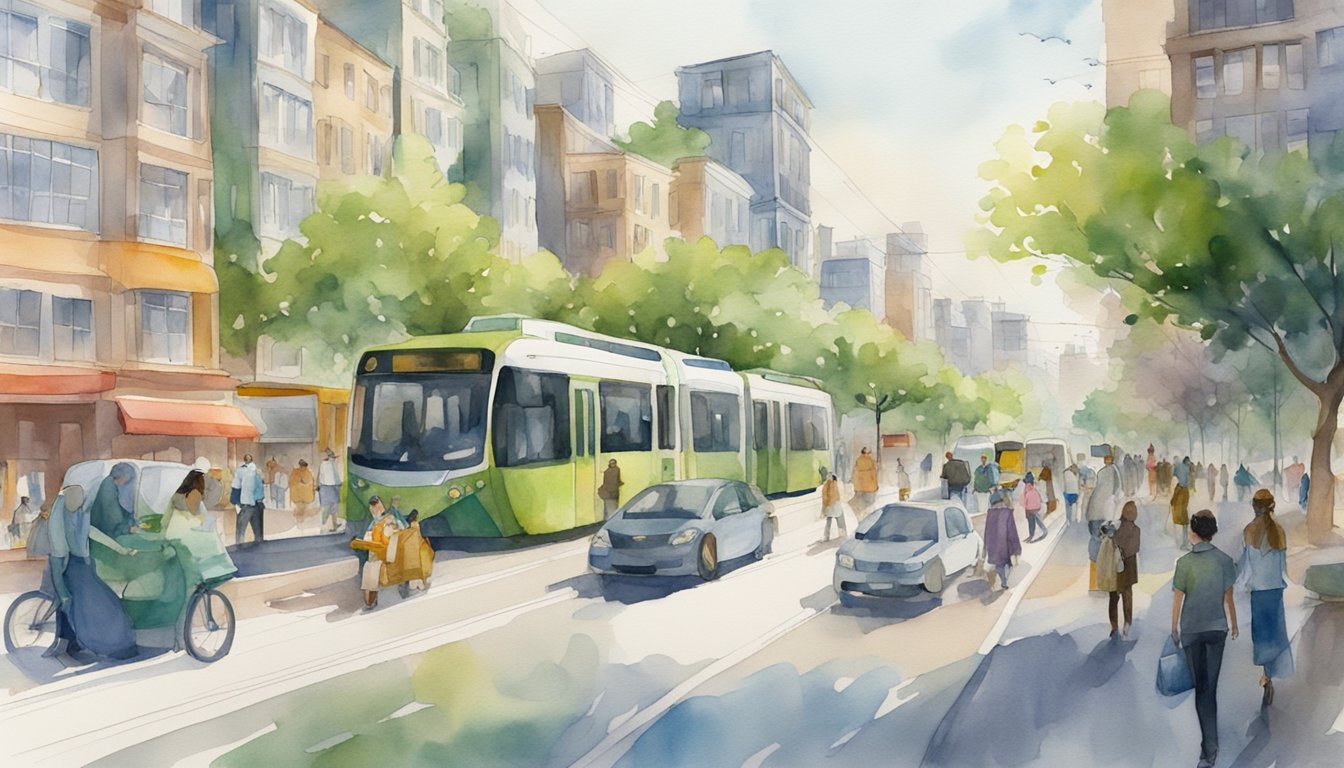Understanding the 15-Minute City Concept
Origin and Evolution
The 15-minute city is an urban planning concept in which most daily necessities and services are easily reached within a 15-minute walk, bike ride, or public transit ride from any point in the city1. It was first coined in 2016 by Carlos Moreno, a professor at the Sorbonne University, and gained widespread attention when it was adopted by Anne Hidalgo, the Mayor of Paris2. This approach focuses on improving quality of life and sustainability by reducing car dependency3 and promoting mixed-use development and new urbanism.
Principles and Goals
A key principle of the 15-minute city is promoting proximity. It aims to create urban environments in which residents can conveniently access work, shopping, education, healthcare, and leisure activities without relying on cars4. This is achieved through mixed-use development, a design approach that combines residential, commercial, and recreational spaces within neighborhoods5. By doing so, 15-minute cities work towards reducing car dependency, improving air quality, and promoting healthier and more active lifestyles. Another goal of the 15-minute city is fostering a sense of community and belonging by encouraging local and small-scale businesses and services6.
Urban Design and Infrastructure
To create a 15-minute city, urban design and infrastructure play a crucial role. The design focuses on promoting walkability, bike-ability, and access to public transit7. This includes building safe and comfortable pedestrian paths, dedicated bike lanes, and efficient transit systems. The concept also advocates for polycentric cities, which distribute services and businesses across multiple urban centers rather than concentrating them in a single downtown area8. This decentralization helps reduce travel times and promotes more equitable access to amenities and services.
Social and Environmental Benefits
There are several social and environmental benefits associated with the 15-minute city concept. It encourages healthier and more active lifestyles, thanks to increased walking, biking, and use of public transit3. Reduced car dependency also leads to improved air quality, a reduction in greenhouse gas emissions, and a lower urban heat island effect9. Furthermore, by fostering social interaction and a sense of community, the 15-minute city can improve mental well-being and combat social isolation10. Finally, innovative urban design practices associated with the concept, like mixed-use development and decentralization, can contribute to more resilient and adaptive cities in the face of environmental and social challenges.
Global Implementation and Case Studies

Paris: Pioneering the Movement
Paris has been a frontrunner in implementing the concept of 15-minute cities. Under the leadership of Mayor Anne Hidalgo, the city embraced the idea of developing neighborhoods, or the “Ville du Quart d’heure,” where all essential amenities, such as shops, schools, healthcare facilities, and parks, can be reached within a 15-minute walk or bike ride. The policy aims to prioritize pedestrians and cyclists, reduce traffic and improve air quality, ultimately tackling climate change.
Adaptations Around the World
Numerous cities and urban areas have adopted or been inspired by the idea of 15-minute cities, tailoring it to their specific contexts:
- Shanghai, Chengdu, and Singapore are planning to create compact urban communities with mixed-use developments and efficient transportation networks, as part of the C40 cities network.
- Melbourne has adopted a 20-minute neighborhood policy, aiming to enhance walkability and local living in its urban planning strategies.
- Portland is working on developing 20-minute neighborhoods with an emphasis on accessibility and affordability to reduce gentrification risks.
- Buenos Aires is promoting active mobility and strengthening its network of pedestrian and bike lanes to create compact urban communities.
Challenges and Criticisms
While many see the 15-minute city concept as an opportunity to encourage sustainable urban development, others point out the potential issues: While many see the 15-minute city concept as an opportunity to encourage sustainable urban development, others point out the potential issues: Some critics argue that implementing such a model could inadvertently lead to socioeconomic disparities, as property values and rental prices may rise in well-planned neighborhoods. Additionally, there is concern that simply increasing local amenities will not automatically reduce traffic congestion or carbon emissions, much like the spot reduction myth in fitness, which falsely suggests that targeting one area will lead to overall fat loss. Successful implementation requires careful planning to ensure accessibility and affordability for all residents.
- Gentrification: Some critics argue that if poorly managed, the 15-minute city could lead to gentrification and increase the disparities between neighborhoods.
- Conspiracy Theory: The concept has been wrongly associated with the World Economic Forum’s (WEF) “Great Reset” initiative, leading to misinformation and unfounded claims that it is promoting a sinister socialist agenda. This disinformation is creating unwarranted skepticism among some communities.
- Complex urban context: Implementing such a concept across cities with diverse and complex societies may be a challenge, making the adaptation of the 15-minute city concept difficult.
In conclusion, the 15-minute city presents a promising model for sustainable urban development and local living, with potential benefits in reducing traffic and tackling climate change. As cities around the world adopt and adapt the concept, it is essential to consider local contexts and address potential drawbacks, ensuring equitable and inclusive urban development.

